In “Passion and the Path: A Tactile Journey”, I explore the complex yet complementary interplay of creation, destruction, transformation, and renewal through tactile techniques like embroidery, beading, book deconstruction and collage. Combining the spiritual teachings of Buddhism and Hinduism, the artworks illustrate how passion, just like the natural cycle of life, can be both a destructive and creative force. When threaded with wisdom and good intention, it can serve as the opposite of a fleeting, uncontrollable agency, but as a conscious, transformative energy capable of leading to clarity and peace.
Shiva, the Destroyer, is brought to life through the chaotic technique of hand-sewing, where fraying fabrics and threadbare textures is used to symbolize the passionate energy of deconstruction. The intense yet delicate stitches tear through the canvas, creating an organic, ever-evolving structure. This act of destruction, when executed with care and intent, is not an end, but a beginning—an opening for growth and rebirth.
Brahma, the Creator, manifests in collage pieces and texts that are carefully selected from the book, along with beading that adorn the canvas. The layering of paint, fabrics, beads, paper and thread adds texture, detail, and dimension to the organic composition, suggesting the complex interplay between destruction and creation, where each element supports the whole. In this detail of the artwork, passion is seen as a deliberate, thoughtful force—a creative act grounded in intention and care.
Vishnu, the Preserver, appears through the usage of a damaged vintage book along with old materials, reflecting the process of reusing and recycling while also embodying the practice of mindful construction and the careful assembly of new ideas from the remnants of the old. By initially deconstructing the book, and later intentionally reconstructing the pages, the action evokes the sustaining power of forgiveness and compassion, ensuring that after the destruction and creation processes, new forms of passion and knowledge are preserved in a mindful, integrated way.
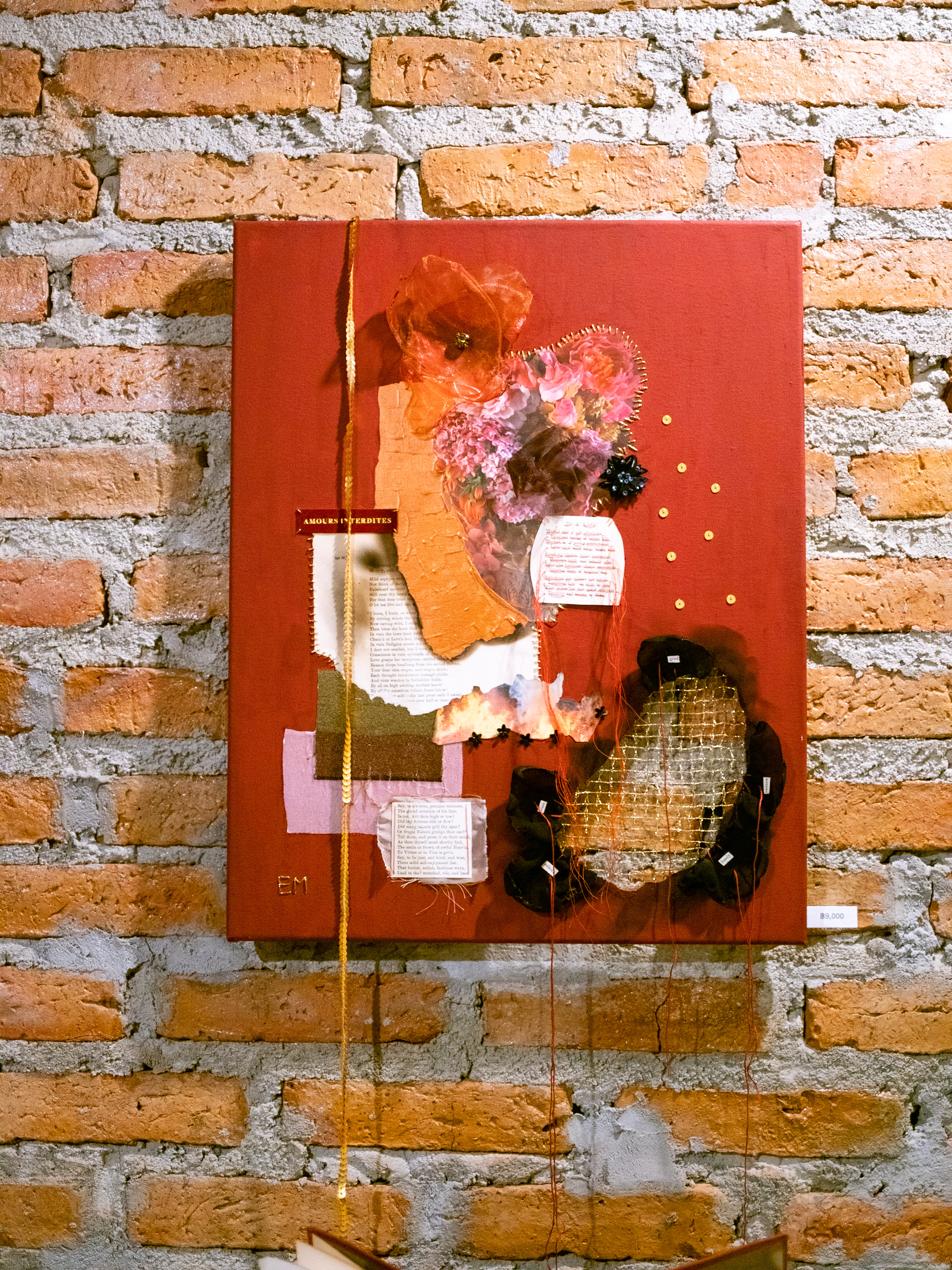
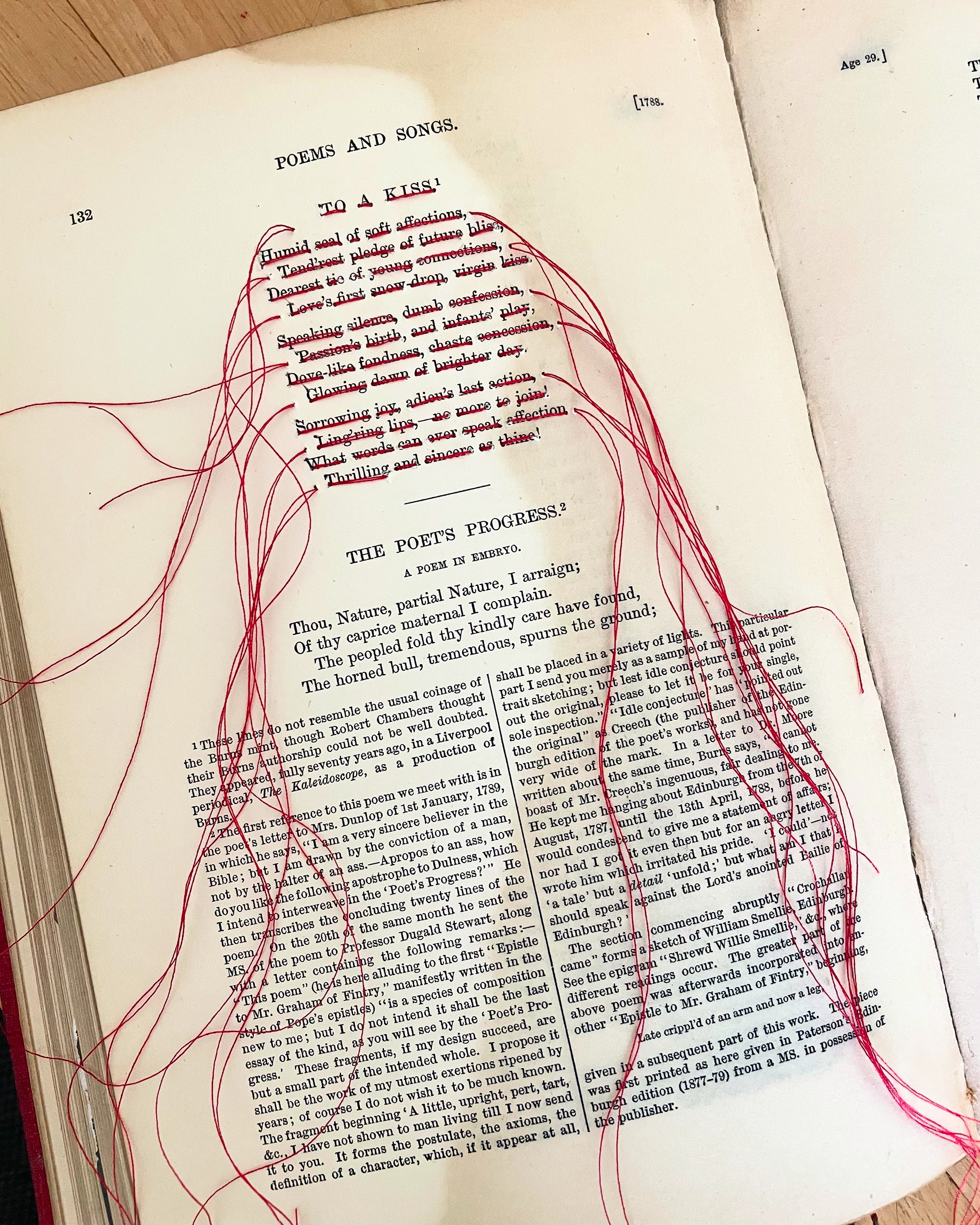
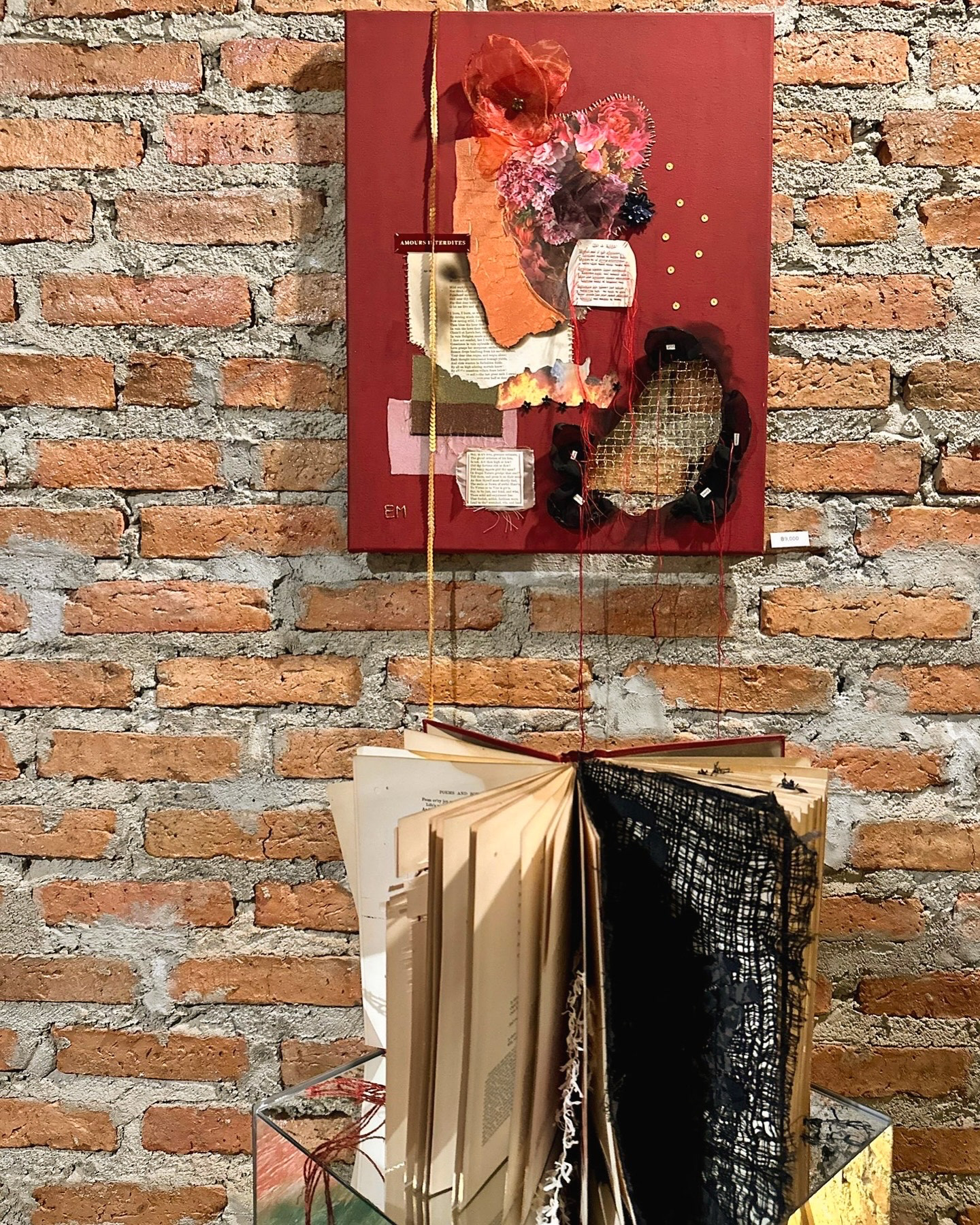
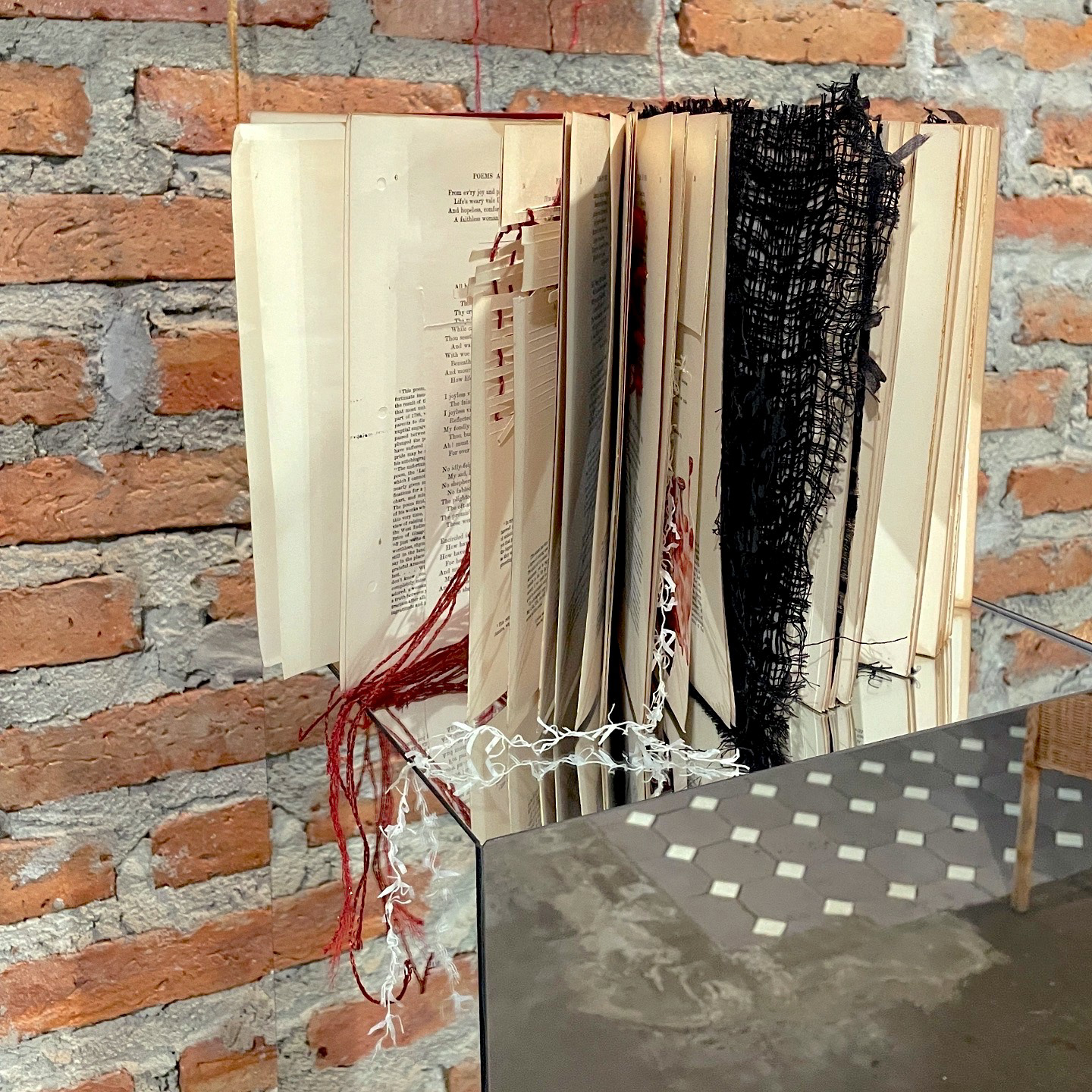
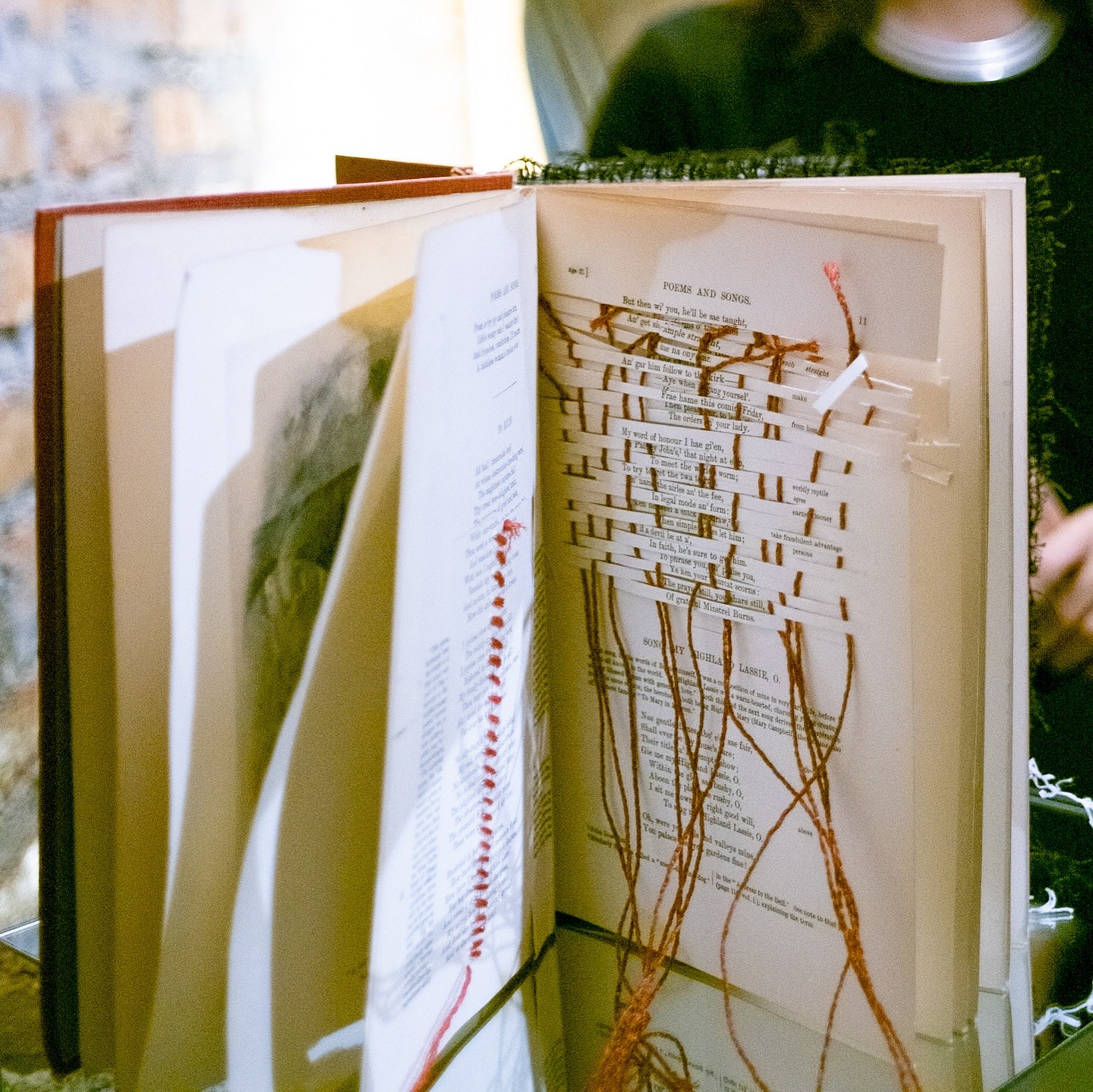
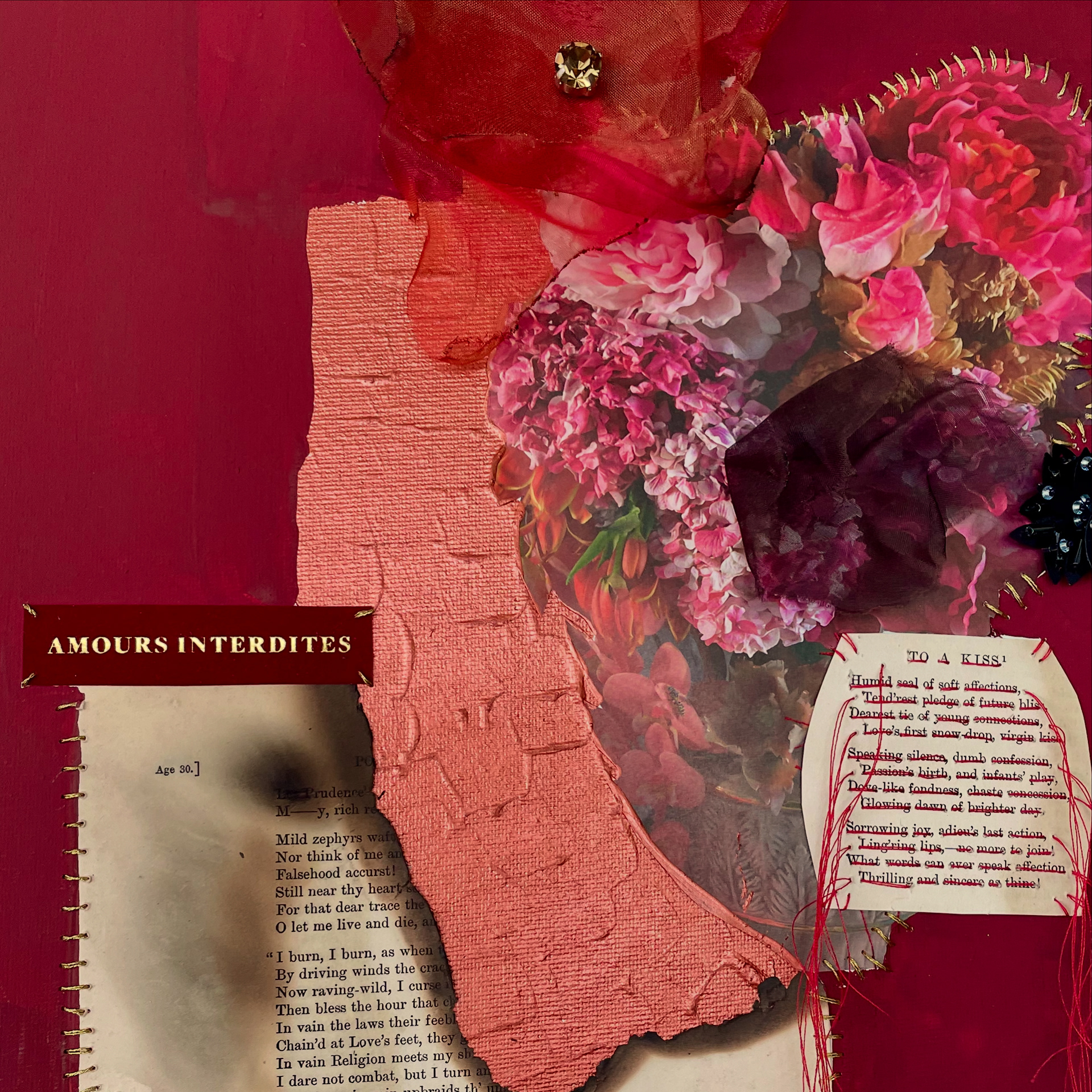
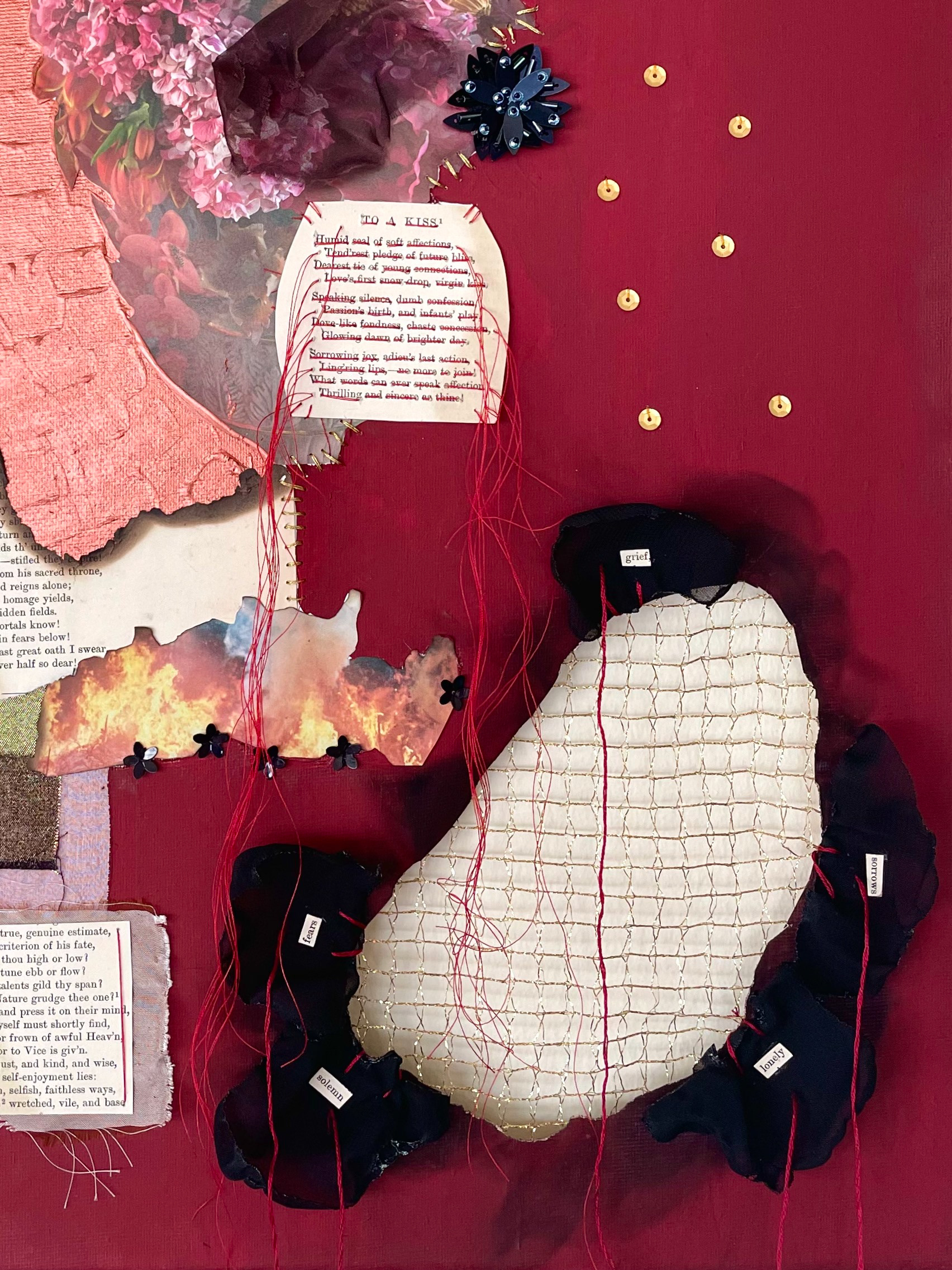
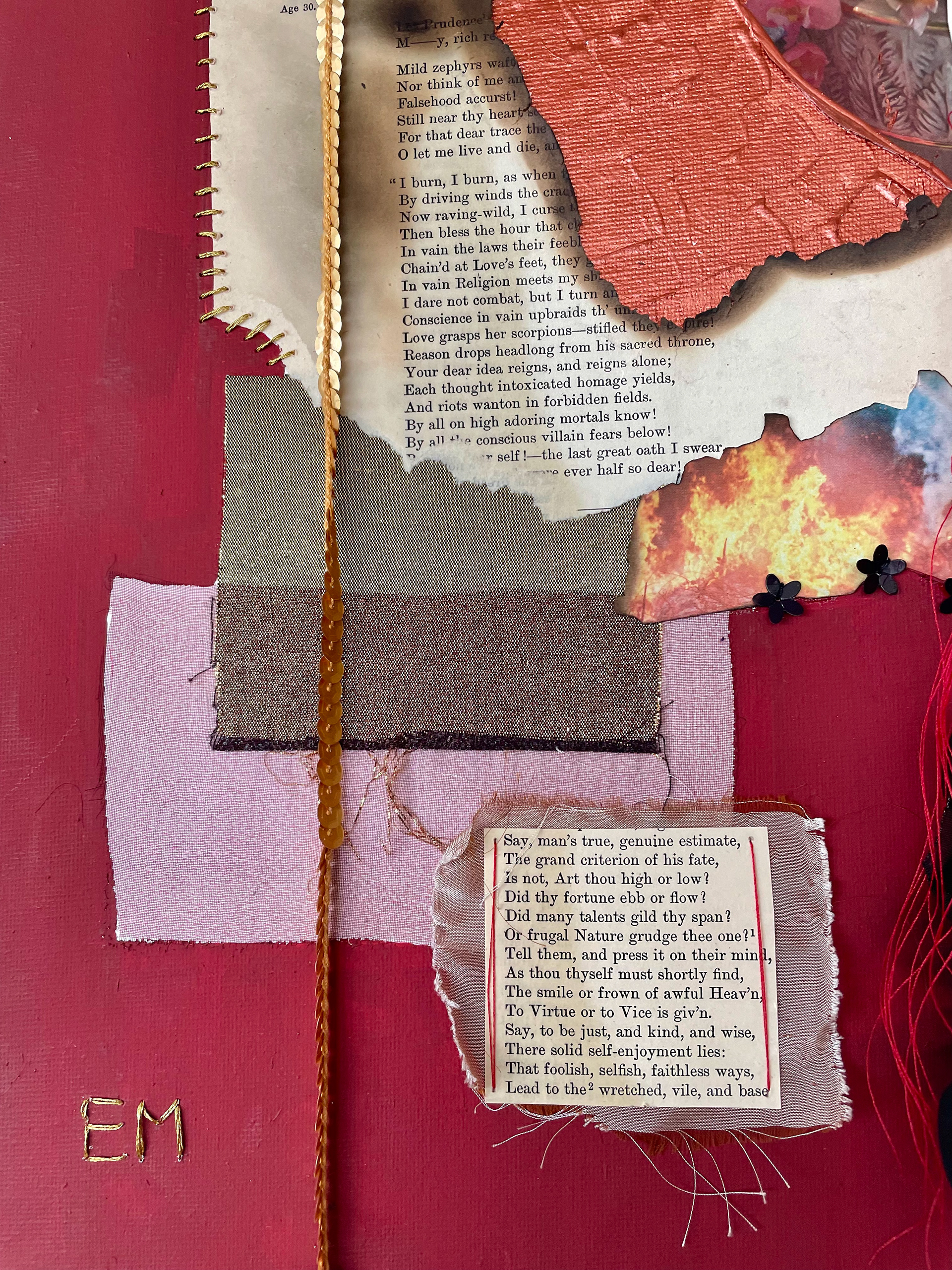
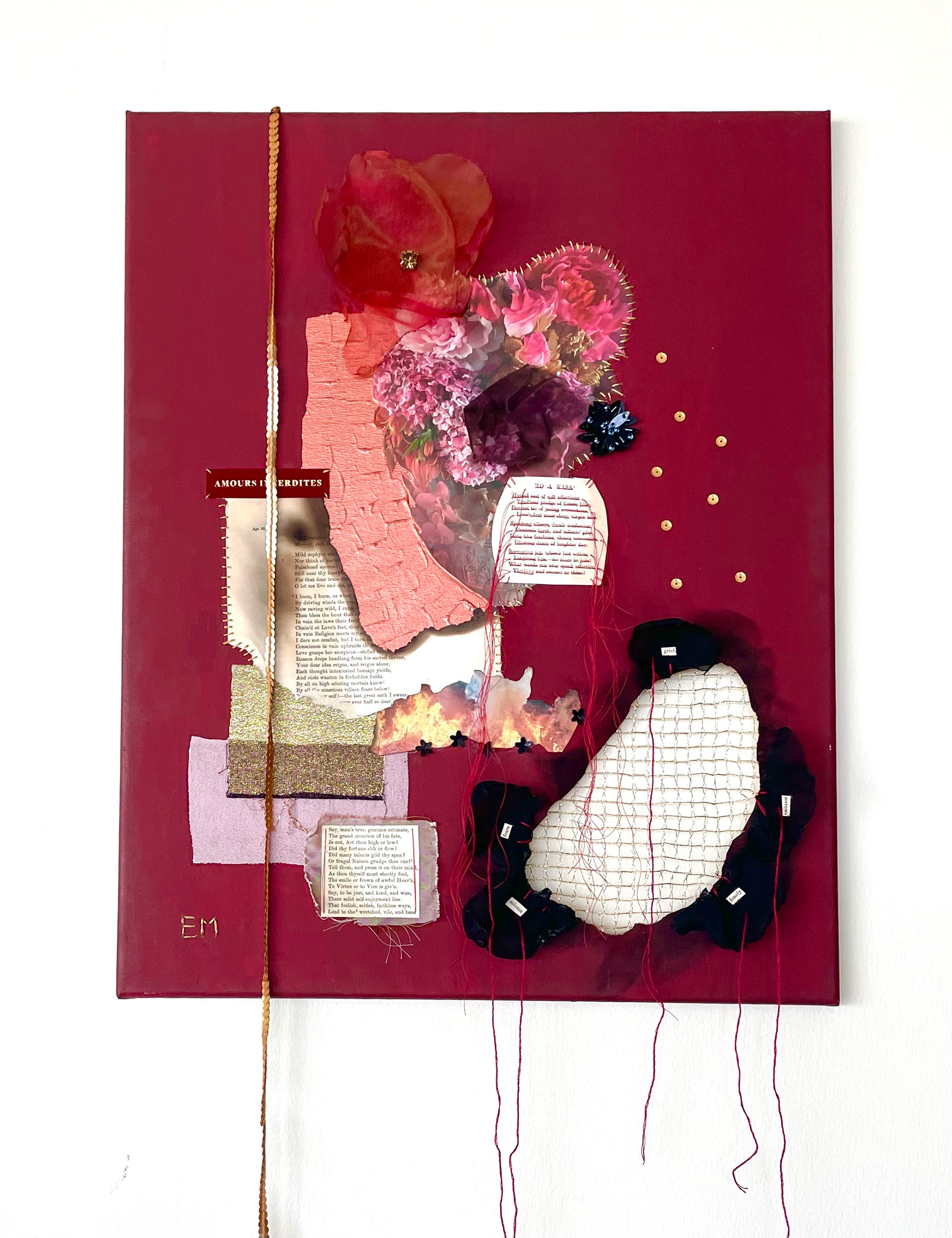
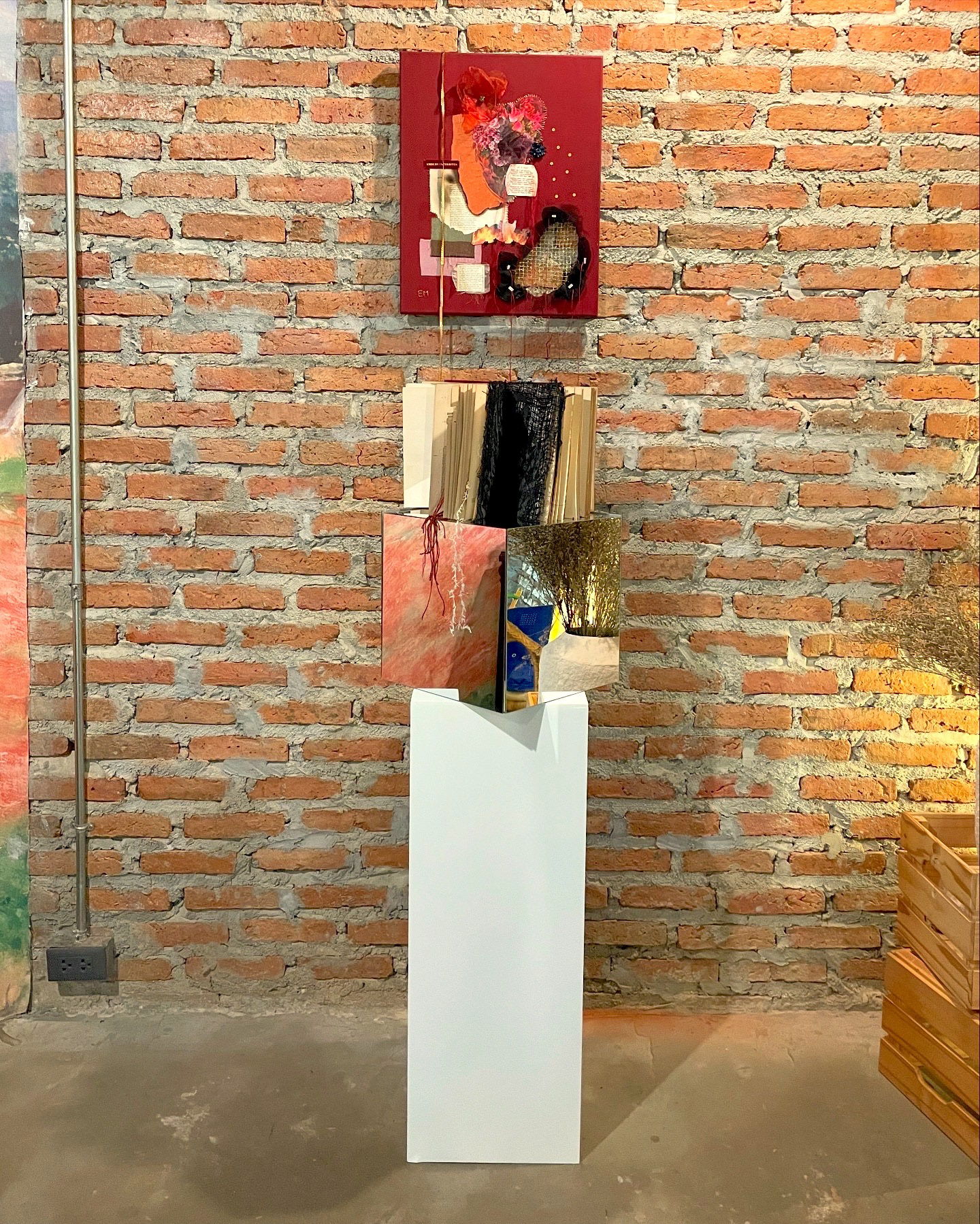
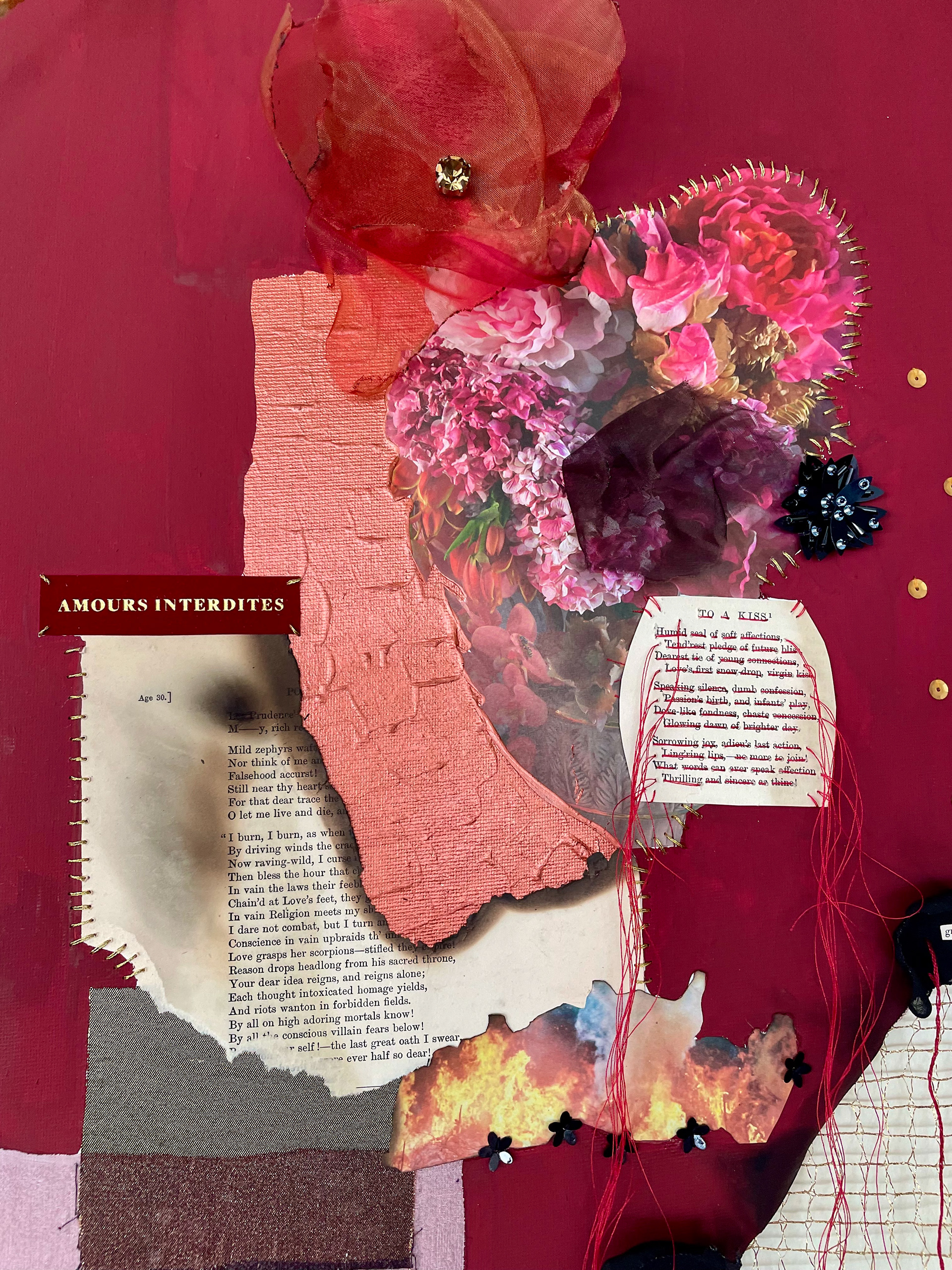
The artwork’s organic compositions speak to the natural cycles of life, drawing on the flowing, interconnected nature of all things. In Buddhist symbolism, the lotus signifies the purity of body, speech, and mind. Crafted from edge-burned organza and adorned with a single crystal bead at its center, it is positioned higher in the canvas to evoke the sky or heaven.
In the middle ground, representing Earth, flowers mark the significant moments of human life—birthdays, anniversaries, weddings, and funerals. Nearby, poems on love and suffering are juxtaposed next to an intricate beading of a black scorned flower, symbolizing the balance between life’s lightness and darkness.
The five black flower sequins correspond to the Five Precepts of Buddhism, while the eight gold sequins represent the Noble Eightfold Path—both serving as ethical guides for a mindful and meaningful life. Through tactile materials and intentionally detailed craftsmanship, these spiritual teachings are given a physical form.
While fire can destroy all living things, the Five Precepts are always there for support and rescue. The five black organza petals, each inscribed with words and oozing red threads, symbolize the blood of life. After a life marked by solemnity, sorrow, grief, fear and loneliness, we find ourselves in opposition to the Five Precepts, existing in a personal “hell on Earth.”
Yet, behind the seemingly endless darkness, a golden net catches us, offering a second chance for redemption or rebirth, pulling us back through a golden thread of sequins, continuing yet again the cycle of life.
In the middle ground, representing Earth, flowers mark the significant moments of human life—birthdays, anniversaries, weddings, and funerals. Nearby, poems on love and suffering are juxtaposed next to an intricate beading of a black scorned flower, symbolizing the balance between life’s lightness and darkness.
The five black flower sequins correspond to the Five Precepts of Buddhism, while the eight gold sequins represent the Noble Eightfold Path—both serving as ethical guides for a mindful and meaningful life. Through tactile materials and intentionally detailed craftsmanship, these spiritual teachings are given a physical form.
While fire can destroy all living things, the Five Precepts are always there for support and rescue. The five black organza petals, each inscribed with words and oozing red threads, symbolize the blood of life. After a life marked by solemnity, sorrow, grief, fear and loneliness, we find ourselves in opposition to the Five Precepts, existing in a personal “hell on Earth.”
Yet, behind the seemingly endless darkness, a golden net catches us, offering a second chance for redemption or rebirth, pulling us back through a golden thread of sequins, continuing yet again the cycle of life.
